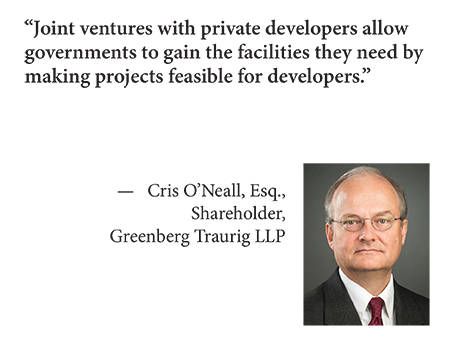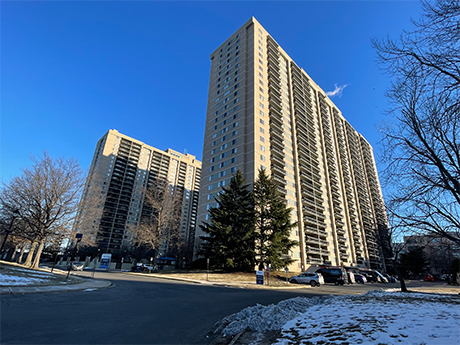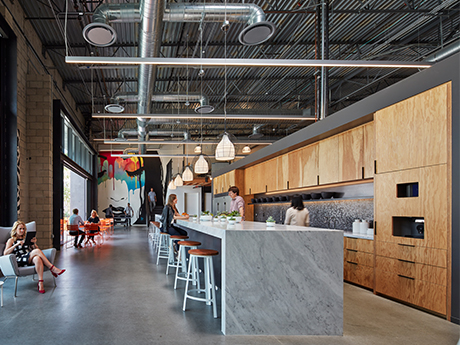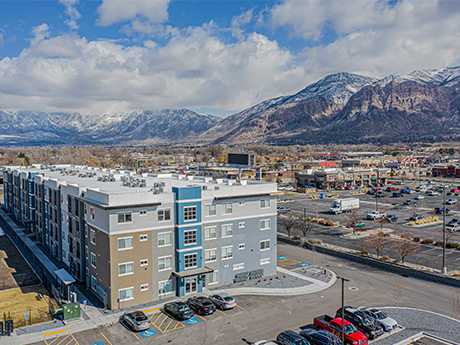The editors of REBusinessOnline.com are conducting a brief online survey to gauge market conditions in 2026, and we welcome your participation. The survey should only take a few minutes to complete. Questions range from property sectors that you are most bullish on heading into 2026 to trends in deal volume to your outlook for interest rates. The results of our 15th annual survey will be compiled and published in the January issues of our regional magazines. Conducting these surveys is part of our mission at France Media to provide readers with indispensable information, and we couldn’t do it without your help. To participate in our broker/agent survey, click here. To participate in our developer/owner/manager survey, click here. To participate in our lender/financial intermediary survey, click here. (Note: Please remember to click on “done” to properly submit the survey.)
Western Feature Archive
FeaturesHeartland Feature ArchiveNortheast Feature ArchiveSoutheast Feature ArchiveTexas & Oklahoma Feature ArchiveWestern Feature Archive
By Cris O’Neall, Esq. of Greenberg Traurig LLP With the number of public-private partnerships for constructing public facilities on the rise, communities across the country wrestle with the question of how to treat such arrangements for ad valorem property tax purposes. In most instances, private developers and taxing entities take opposing positions on the issue. Public-private joint ventures have become a popular strategy to achieve community objectives through collaboration with private developers. To construct a particular facility, a municipality or other government will typically provide subsidies or other financial incentives to encourage participation in the project by a private-industry partner or partners. These subsidies, which may come in the form of grants or tax credits, often lead to property tax contention. Some taxing authorities include the subsidies or tax benefits granted to the private developer in the taxable assessed value of the real property. In contrast, private developers view such subsidies or benefits as tax-exempt intangible property that should not be included in assessed values. Here are a few common incentives and their property tax implications: Low-Income Housing Subsidies The treatment of federal subsidies for operation and construction of low-income housing became an early battleground in the ongoing conflict over …
Affordable HousingDistrict of ColumbiaFeaturesHeartland Feature ArchiveMultifamilyMultifamily & Affordable Housing Feature ArchiveNortheast Feature ArchiveSoutheastSoutheast Feature ArchiveTexas & Oklahoma Feature ArchiveWestern Feature Archive
Why Fannie Mae, Freddie Mac Believe the Wind Is at Their Back
by John Nelson
Fannie Mae and Freddie Mac are adopting a more pro-business approach when it comes to closing multifamily loans in 2025 than in recent years, when sources say they were more selective. The two government-sponsored enterprises (GSEs) combined to produce 33 percent more multifamily loans in first-quarter 2025 compared with first-quarter 2024. “There is definitely a ‘volume on’ mindset at both shops,” says Landon Litty, director of agency sales at BWE. “This is a real positive for borrowers.” For Fannie Mae, the volume of multifamily loans totaled $11.8 billion in the first quarter of 2025, compared with $10.1 billion in the first quarter of 2024. Meanwhile, Freddie Mac produced approximately $15 billion in multifamily loans in the first quarter, financing around 144,000 rental units, well above the approximately $10 billion produced in first-quarter 2024. “The first quarter of 2025 has been dynamic, with real-time adjustments to meet market needs while maintaining a focus on soundness,” says a spokesperson at Freddie Mac Multifamily. Other sources attest that the GSEs are focusing on their sponsors more so than in previous years. T.J. Edwards, chief production officer for the multifamily finance division at Walker & Dunlop, says the agencies are proactively vetting first-time borrowers …
Foundation Has Been Laid for Seniors Housing Investment Sales to Flourish in 2025, Says InterFace Panel
by John Nelson
LOS ANGELES — Dan Baker, director of capital markets for JLL, says the seniors housing and care industry doesn’t need to speculate on whether the market rebound is real or perceived because the numbers tell the story. “I think last year saw the most announced seniors housing transactions ever in a calendar year, not necessarily the most dollar volume,” said Baker during a recent investment panel discussion at InterFace Seniors Housing West in Los Angeles. Baker cited the lack of larger portfolios trading hands as the reason for the modest dollar volume in transaction activity in 2024. Editor’s note: InterFace Conference Group, a division of France Media Inc., produces networking and educational conferences for commercial real estate executives. To sign up for email announcements about specific events, visit www.interfaceconferencegroup.com/subscribe. According to research firm MSCI, property and portfolio sales in the seniors housing and care space totaled $13.2 billion in 2024 compared with $10.9 billion in 2023, a year-over-year increase of 21 percent. That’s still far below the $20.7 billion in deal volume notched in 2021. The data is based on independent reports of sales $2.5 million and above. One compelling trend noted by Baker is the tremendous growth in net operating …
FeaturesHeartland Feature ArchiveMultifamily & Affordable Housing Feature ArchiveNortheast Feature ArchiveSoutheast Feature ArchiveTexas & Oklahoma Feature ArchiveWestern Feature Archive
Forecast Survey: What’s Your Take on Commercial Real Estate in 2025?
by John Nelson
The editors of REBusinessOnline.com are conducting a brief online survey to gauge market conditions in 2025, and we welcome your participation. The survey should only take a few minutes to complete. Questions range from property sectors that you are most bullish on heading into 2025 to trends in deal volume to your outlook for interest rates. The results of our 14th annual survey will be compiled and published in the January issues of our regional magazines. Conducting these surveys is part of our mission at France Media to provide readers with indispensable information, and we couldn’t do it without your help. To participate in our broker/agent survey, click here. To participate in our developer/owner/manager survey, click here. To participate in our lender/financial intermediary survey, click here. (Note: Please remember to click on “done” to properly submit the survey.)
Affordable HousingBuild-to-RentCivicData CentersFeaturesHealthcareHospitalityIndustrialLife SciencesMixed-UseMultifamilyNet LeaseNevadaOfficeRestaurantRetailSelf-StorageSeniors HousingSingle-Family RentalStudent HousingWesternWestern Feature Archive
Emerging Trends Report Predicts Rebound in Transaction Volume in 2025 as Capital Markets Are ‘Poised for Recovery’
by John Nelson
LAS VEGAS — At the September meeting of the Federal Open Market Committee (FOMC), the Federal Reserve lowered the federal funds rate by 50 basis points, which is the first easing of monetary policy in four years. This move lowered the short-term interest rate to a target range of 4.75 to 5 percent. Elevated borrowing costs have stifled commercial real estate transaction volumes the past couple years as buyers and sellers found that values were a moving target. Now with a reduction in interest rates, many real estate professionals expect transaction volume to rebound at least moderately. “In 2025, we expect lower interest rates will reduce borrowing costs, aid in price discovery and ultimately encourage an uptick in [commercial real estate] transactions,” said Angela Cain, global CEO of the Urban Land Institute (ULI). Cain’s comments came in a prepared statement to summarize the findings of Emerging Trends in Real Estate 2025, an annual report jointly produced by PwC US and ULI. The report was published in conjunction with ULI’s Fall Meeting, which is taking place this week at Resort World Las Vegas. Cain said that the real estate professionals surveyed for the report relayed that sentiment is improving, though many remain cautious. …
Cannabis Dispensary Development Requires Specialized Site Selection, Design for Success
by John Nelson
By Virginia Maggiore of RDC Although the roadmap to opening a dispensary presents unique challenges inherent to the cannabis industry, the process shares many parallels with traditional retail projects. From selecting the optimal site, designing the brand and interior and implementing the build-out plan, the similarities are evident. However, a pivotal differentiator lies in the need to assemble a team that has experience with cannabis laws, sites, operations and build-outs. The collective expertise comprised by seasoned architects, designers and general contractors is instrumental in navigating the complexities of the cannabis industry, avoiding unnecessary expenses and delays, while ensuring a successful store opening. Selecting the Optimal Site The first step in the process to opening a dispensary involves choosing the optimal property for the storefront. While some entrepreneurs opt for ground-up construction, the majority leverage existing vacant spaces, repurposing them into cannabis dispensaries. Operators that are refurbishing an existing property for retail will want to select a site that boasts a vanilla shell or blank canvas for the new store to build upon. Choosing properties that already contain many of the costly elements like utilities and bathrooms can greatly minimize construction expenses. This allows operators to save their budget for a …
— By Elise Kunihiro and Maura Schafer — Historic building adaptive reuse creates a bridge between the past and the future, resulting in places that can become the hearts and souls of their communities. The reuse of these buildings offers community benefits, such as sustainability, new public spaces and character. Reactivate local economies Beyond revitalizing older buildings, adaptive reuse projects can also support small local business owners. A 1922 brick office building in the East Village Arts District of downtown Long Beach, Calif., for example, now hosts Partake Collective. The 25,000-square-foot cloud concept and food hall incubator allows visitors to support local restauranteurs while dining in a communal food hall or sidewalk dining area. Studio One Eleven served as the project’s architect, while RDC did interiors and procurement. The goal of this redevelopment model was to create a benchmark for future development that celebrates food diversity and enhances community building. It doesn’t hurt that Partake Collective remains an active and engaged member of the Long Beach community by working with local educational institutions to support pathways to private enterprise, business ownership and job opportunities for the most underrepresented communities. Partake Collective has already partnered with culinary programs at Browning High …
— By Carina Mills and Maura Schafer — In 2017, partner design firms RDC and Studio One Eleven (RDC-S111) relocated from a high-rise office to a former 25,000-square-foot Nordstrom Rack at 245 E. Third Street in downtown Long Beach, Calif. The store was located in a 1980s-era shopping center that had fallen into serious decline. On the plus side, the location was consistent with Studio One Eleven’s mission of urban repair, allowing for a pedestrian-level interaction with the neighborhood, while strengthening the city fabric. Soon enough, the retail space was converted into a modern creative office that added 130 design professionals to the neighborhood’s daytime population. This higher-use conversion occurred alongside other public and private investments that brought restaurants into the area. These included Ammatoli (a Los Angeles Times Top 100 restaurant), Beachwood Brewery, Rainbow Juices and Michael’s Pizzeria, among others. The adjacent Harvey Milk Park garnered grants for a reinvigoration by Studio One Eleven, and developers started working on housing development around the immediate neighborhood. This move and project was not only a chance for RDC and Studio One Eleven to create urban impact, but to design an environment for staff that instills creativity, collaboration and wellness. The office achieved …
— By Brett Silverstein — With uncertainty looming large and terms like risk, crash and recession swirling around the industry, it comes as no surprise that some investors are clinging to their cash reserves. But savvy investors go back to the fundamentals of the real estate cycle. While the economic conditions that influence the cycle are often different, such as the Dot-Com bubble, the Global Financial Crisis and, most recently, COVID, the predictability of the real estate cycle is consistent. In my opinion, a sound acquisitions strategy today is one grounded in acquiring high-quality assets below replacement cost in Intermountain West markets that exhibit strong fundamentals, such as outsized rent growth, continued strong household formation patterns and limited future supply growth. Distress leads to discounts Amidst the prevailing market turbulence, the acquisition of existing assets at a discount to the cost of building new ones becomes an even more compelling proposition. Replacement cost alone may not suffice as an investment metric, but the combination of discounted prices and robust market fundamentals creates the secret sauce of sound investment decisions. Housing is an essential good that is always in demand and has historically inflated over time. The foundational concept of “heads …
Newer Posts











